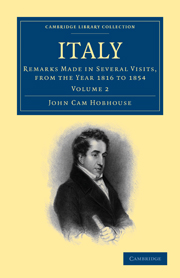Summary
THE PALATINE AND ARCH OF CONSTANTINE.
The troops of Genseric occupied the Palatine and despoiled it of all its riches. The ruin of the structures themselves is involved in the most impenetrable obscurity: nor have the immense masses which remain assisted, though they have stimulated, research. Theodoric found their beauty admirable, but impaired by age. From that moment the palace of the Cæsars disappears, and the labours of the antiquary have been unable to produce more than a single word to show that it was not ruined by Totila, which is the general belief. Anastasius, in the life of Pope Constantine who was elected in 708, narrating a civil commotion which took place in Rome against the emperor Philip, has these words: “And it came to pass that while Christopher, who was duke, was contending on this account with Agatho and his followers, a civil war arose, so that they came to arms in the sacred way before the palace.” What a fate! The palace may have been a fragment, or, as it now is, a word.
When the Palatine again rises, it rises in ruins. A corner of the structures had served to lodge the Frangipane family. The Turris Cartularia included a portion of the Palatine mansions and the arch of Titus. It was thrown down in 1240 by Gregory IX., was rebuilt, and shortly after destroyed by the people.
The pilgrim of the thirteenth century who talks of the imperial palace must be alluding to sites, not buildings.
- Type
- Chapter
- Information
- ItalyRemarks Made in Several Visits, from the Year 1816 to 1854, pp. 91 - 108Publisher: Cambridge University PressPrint publication year: 2009First published in: 1859



